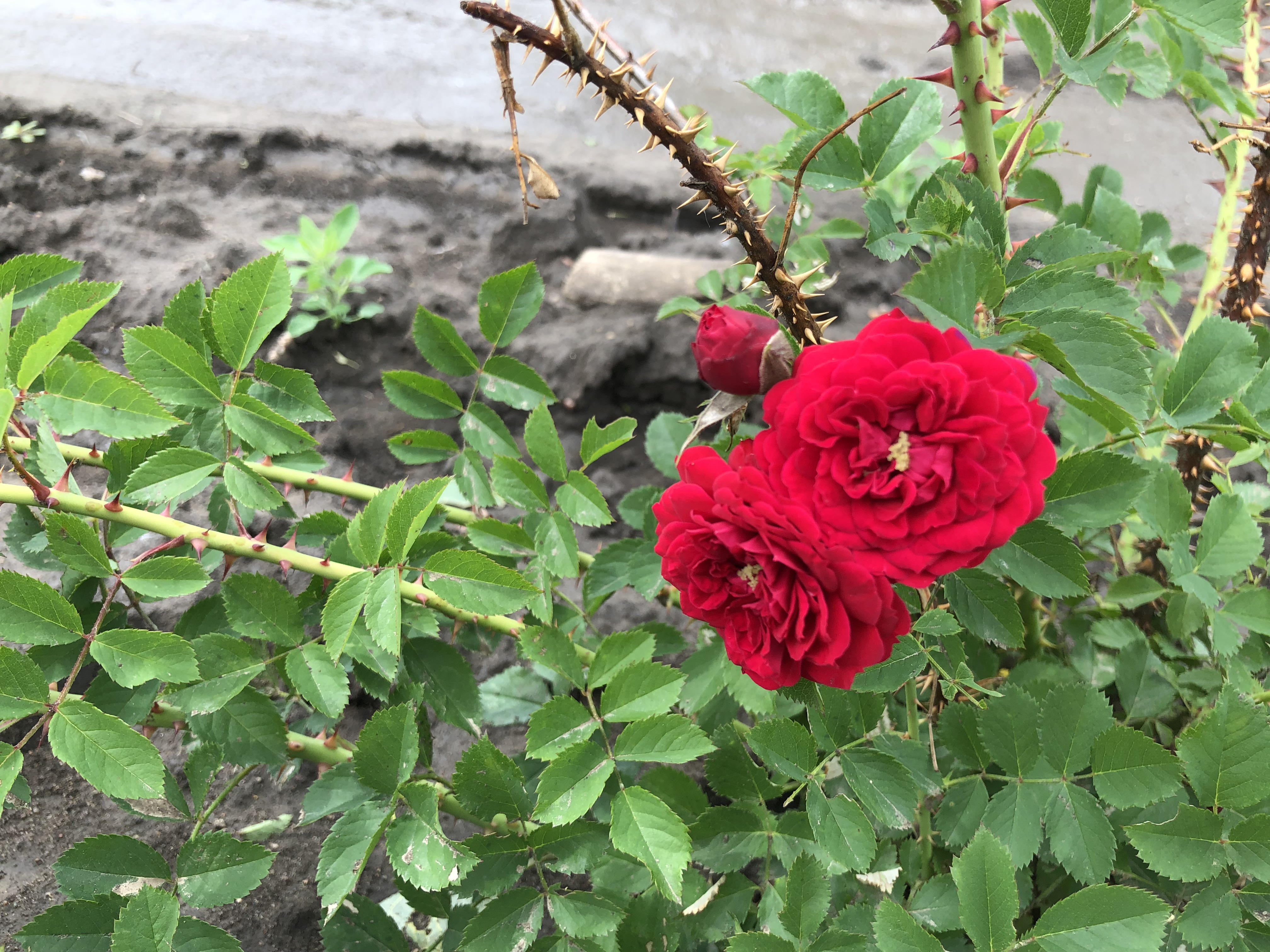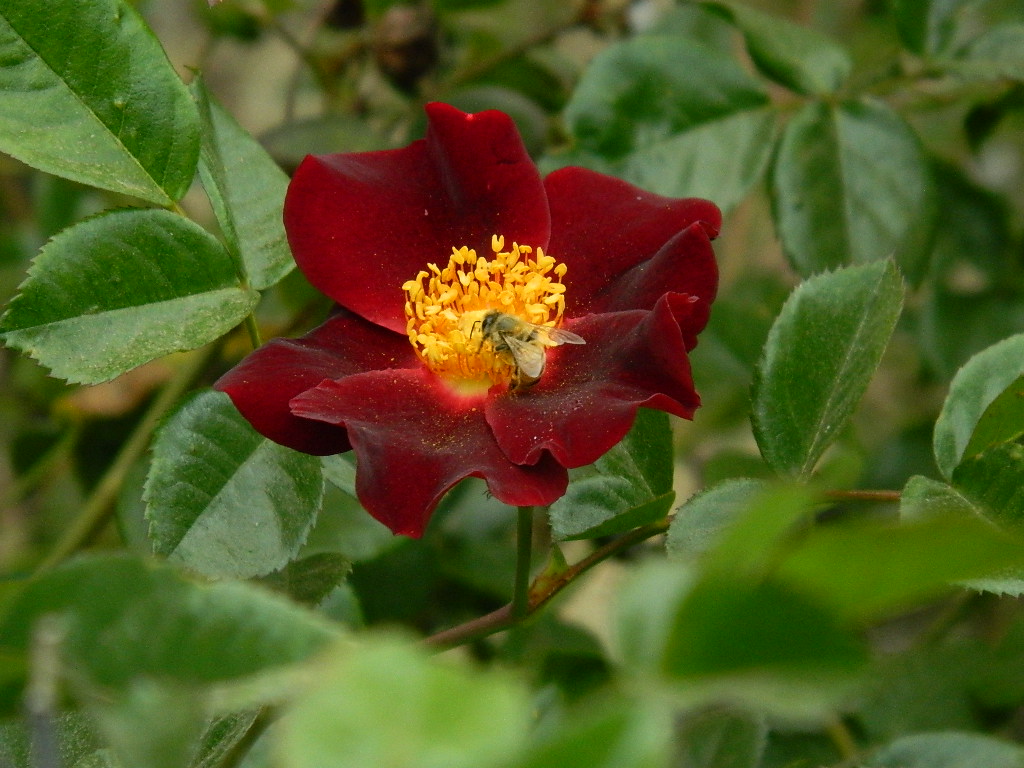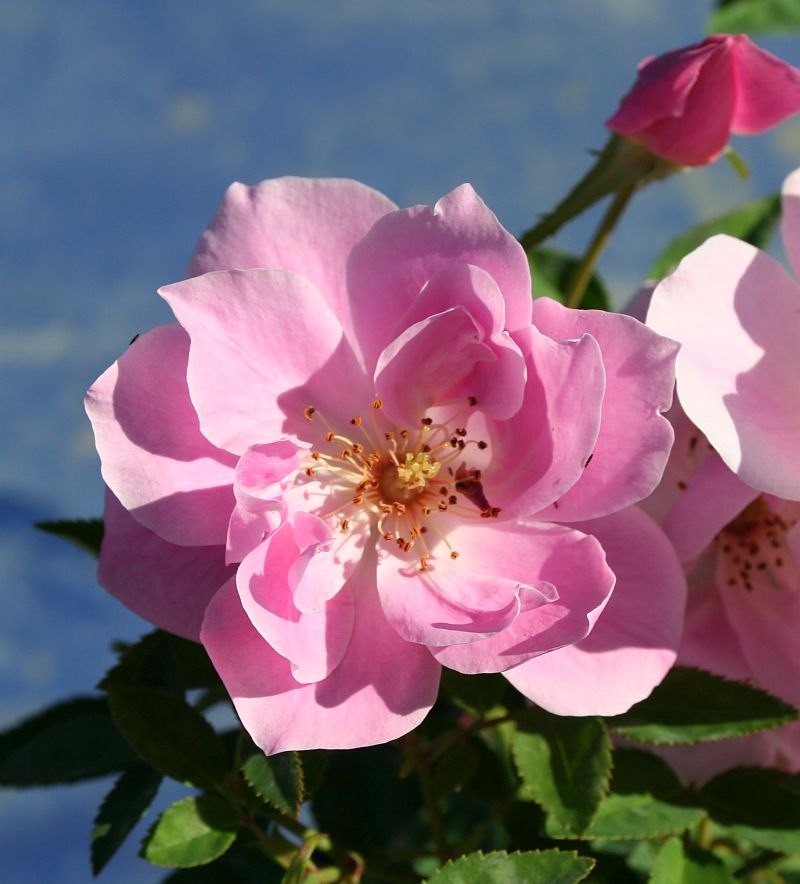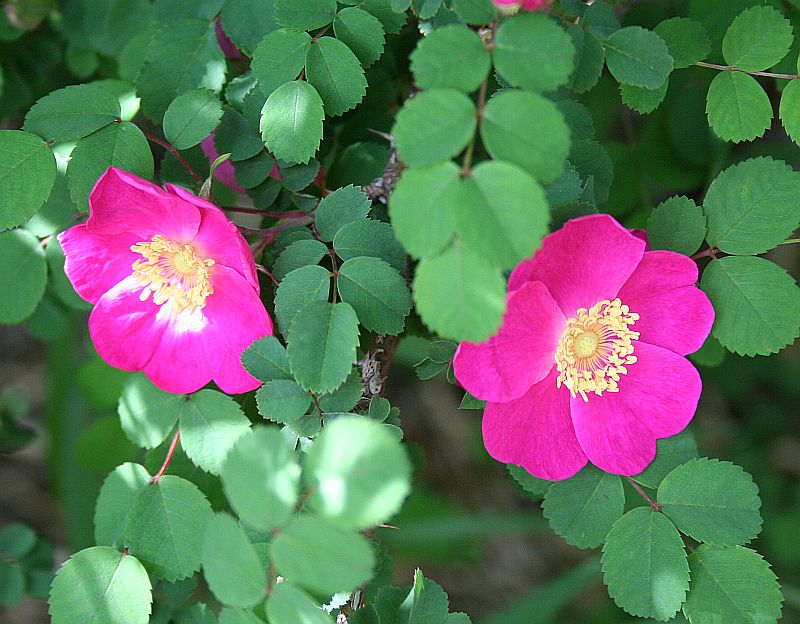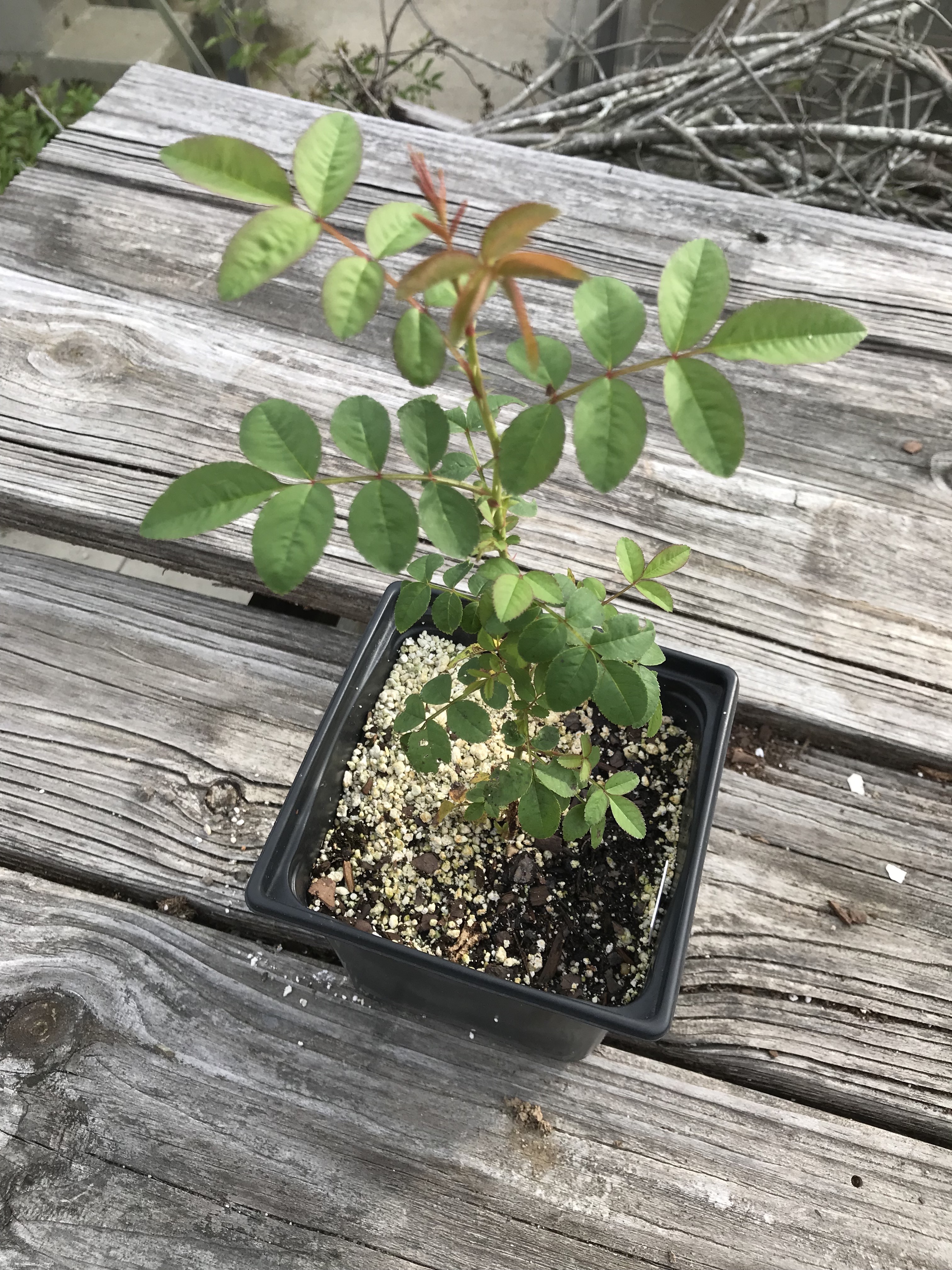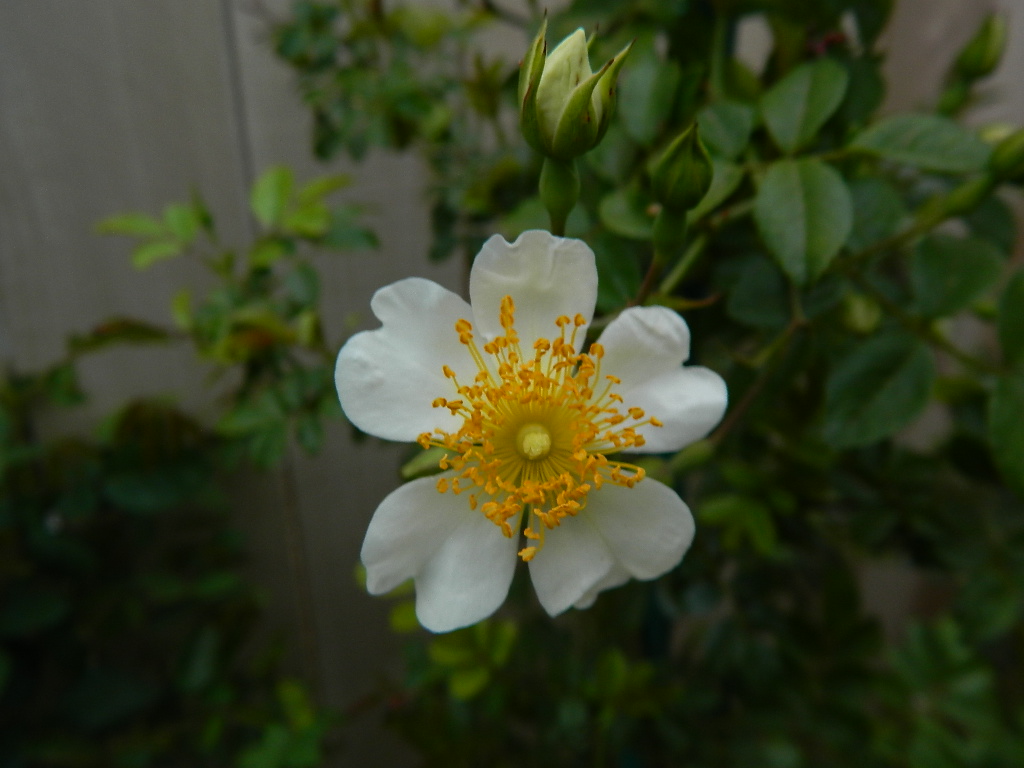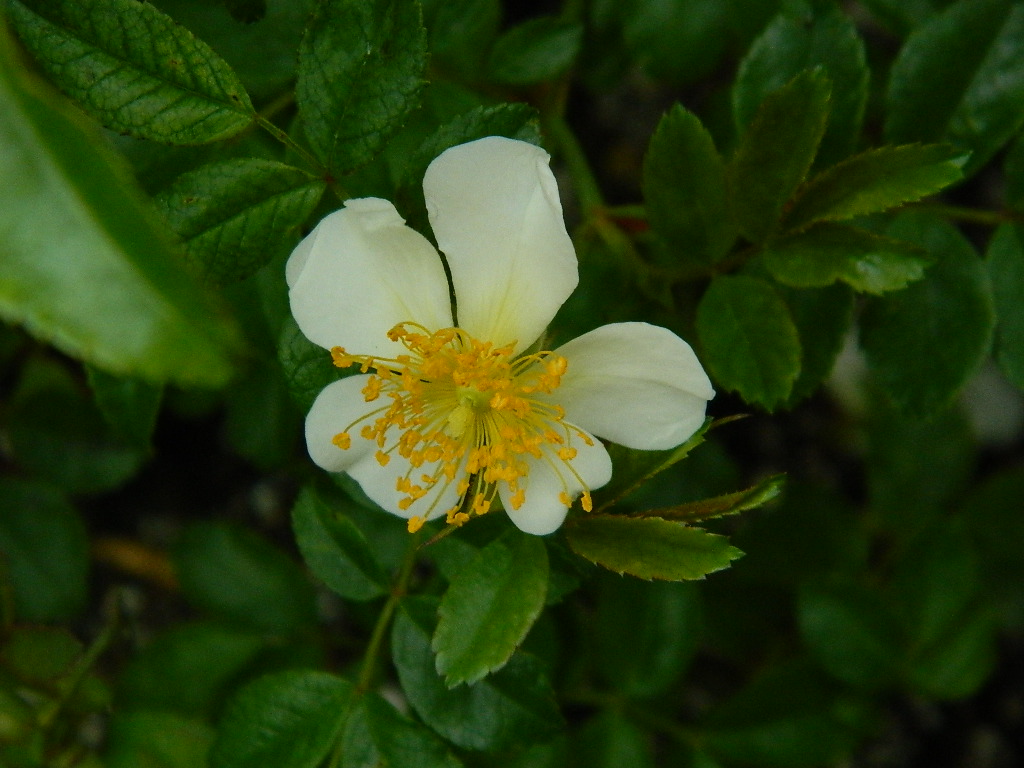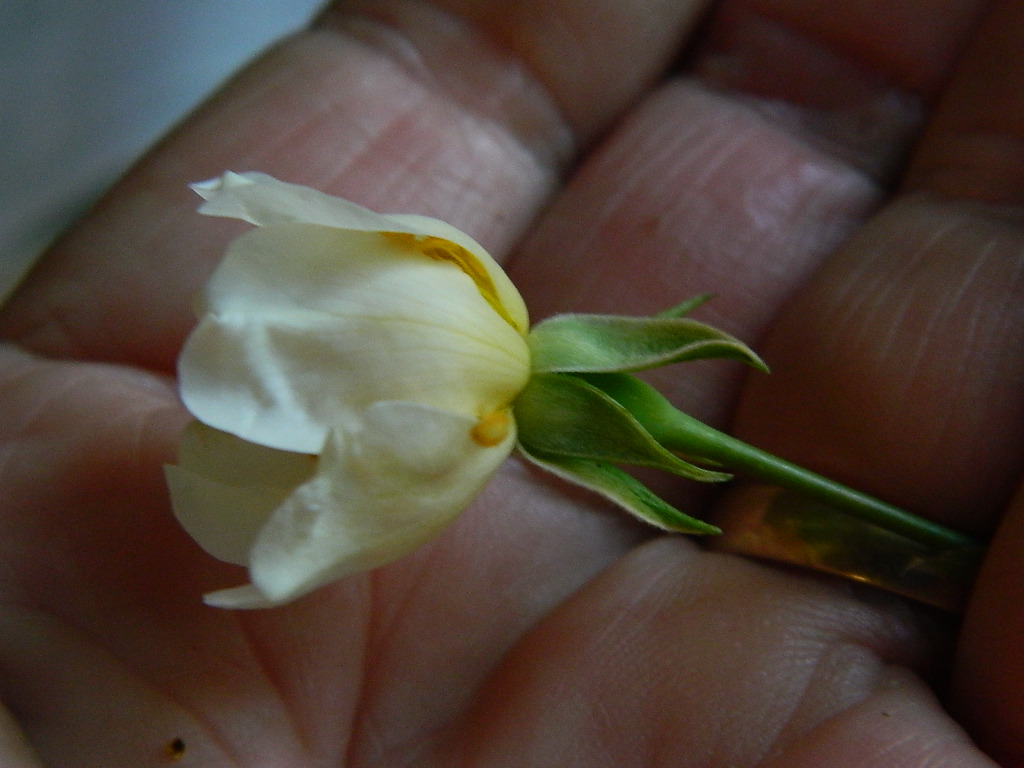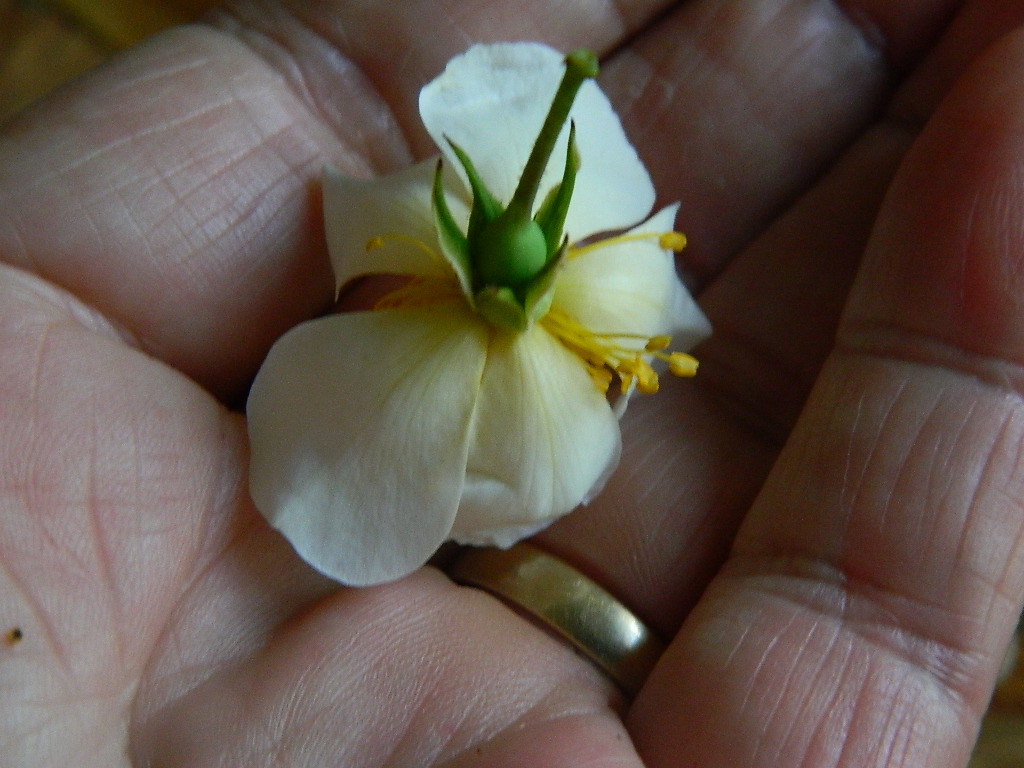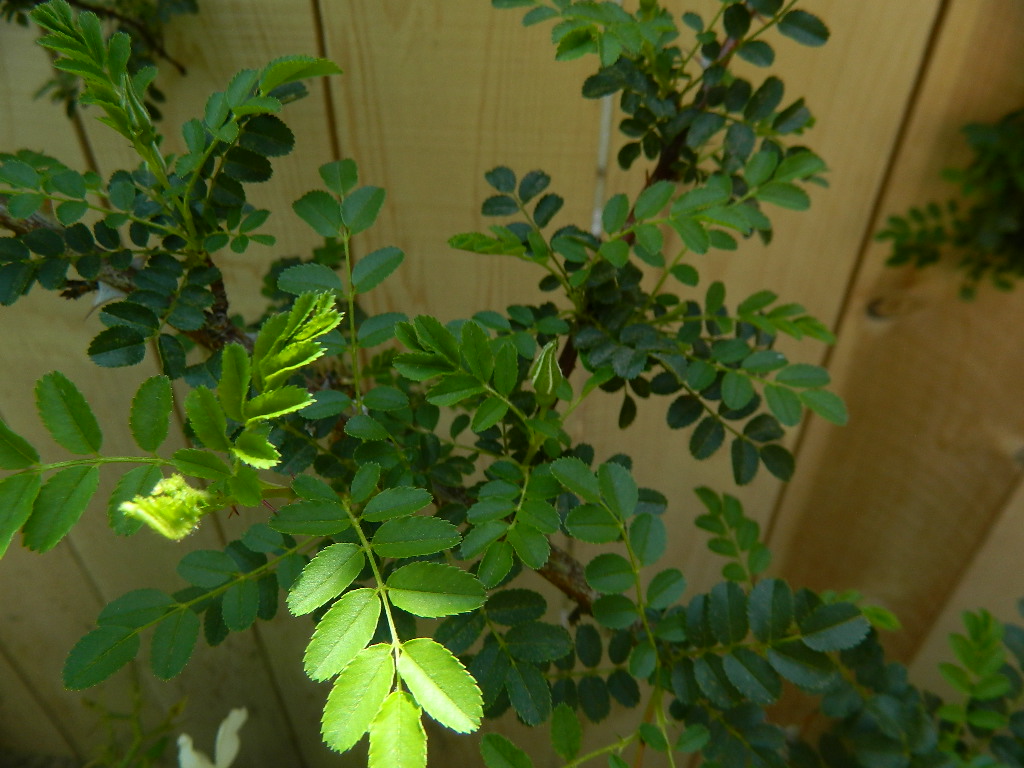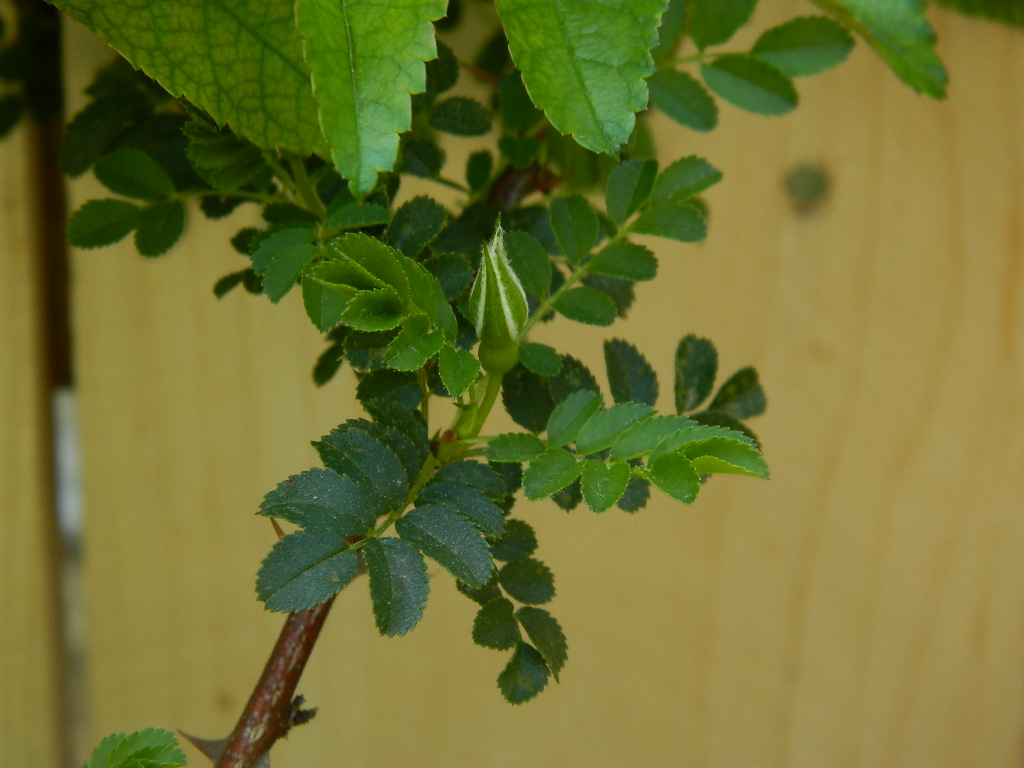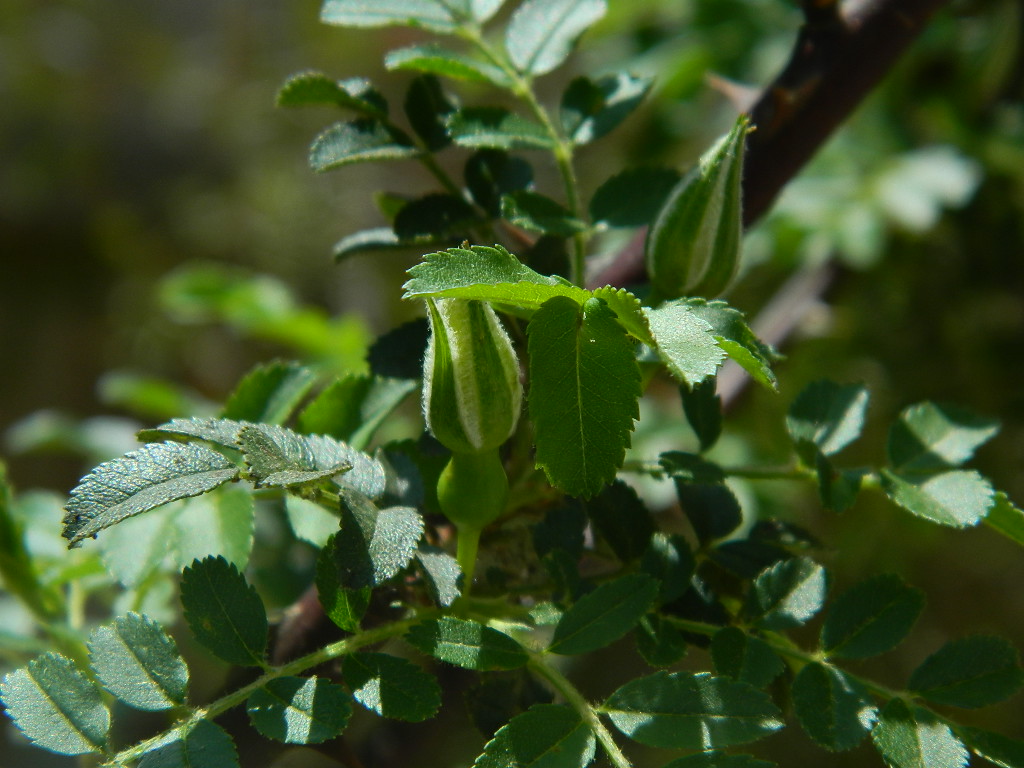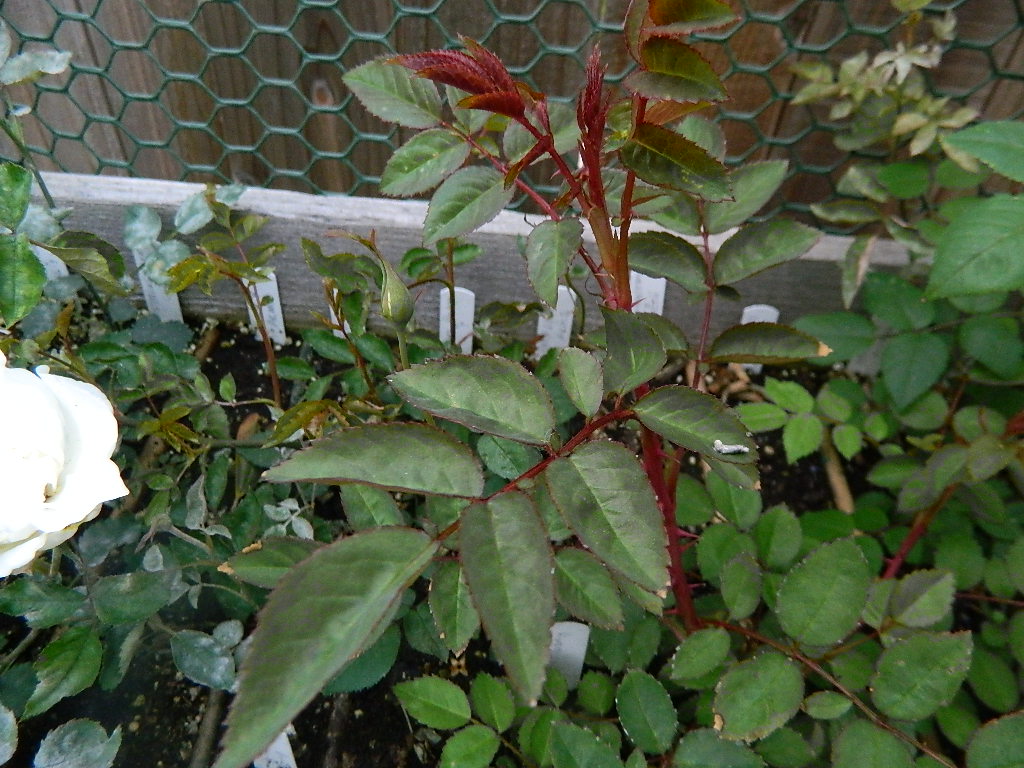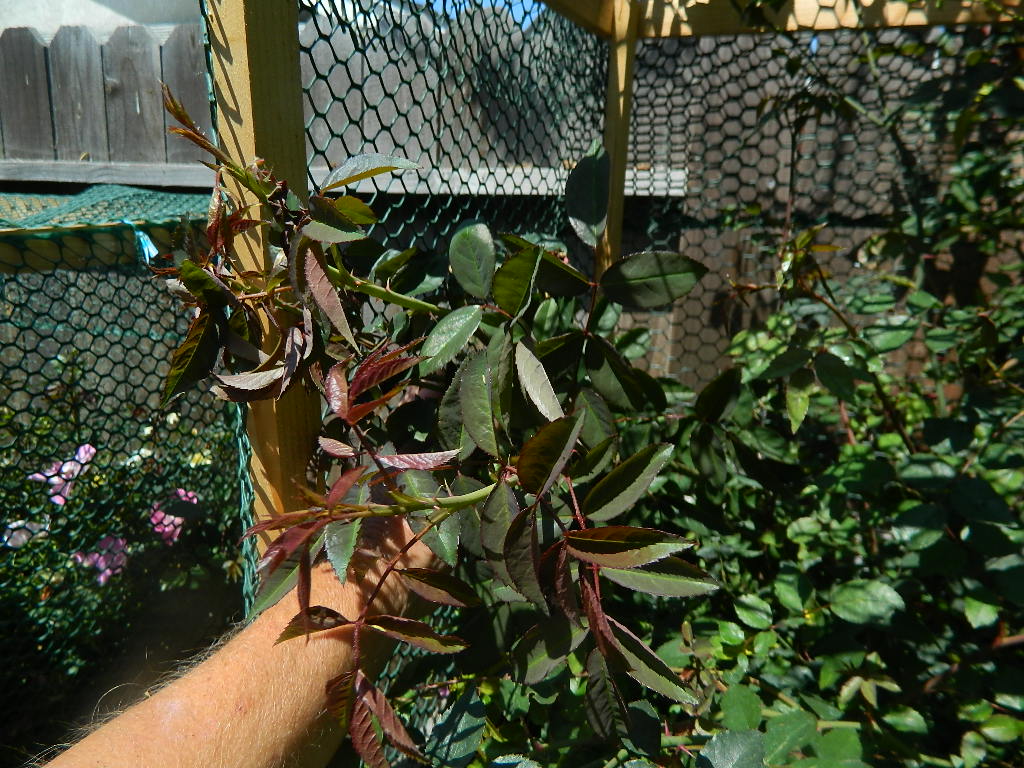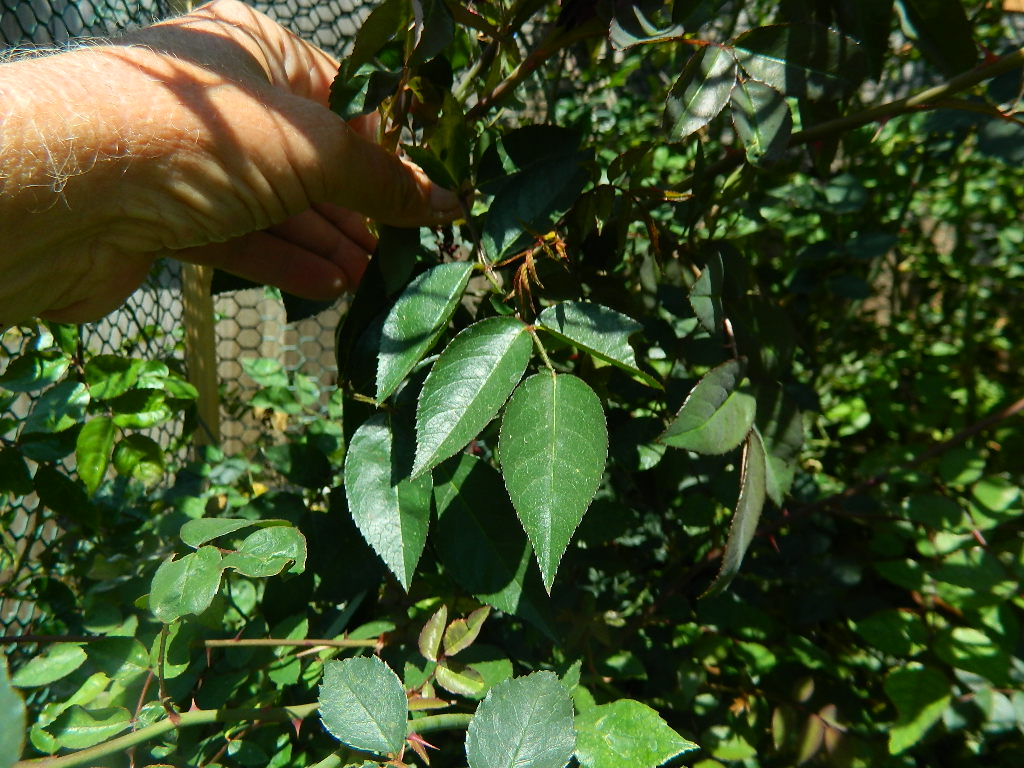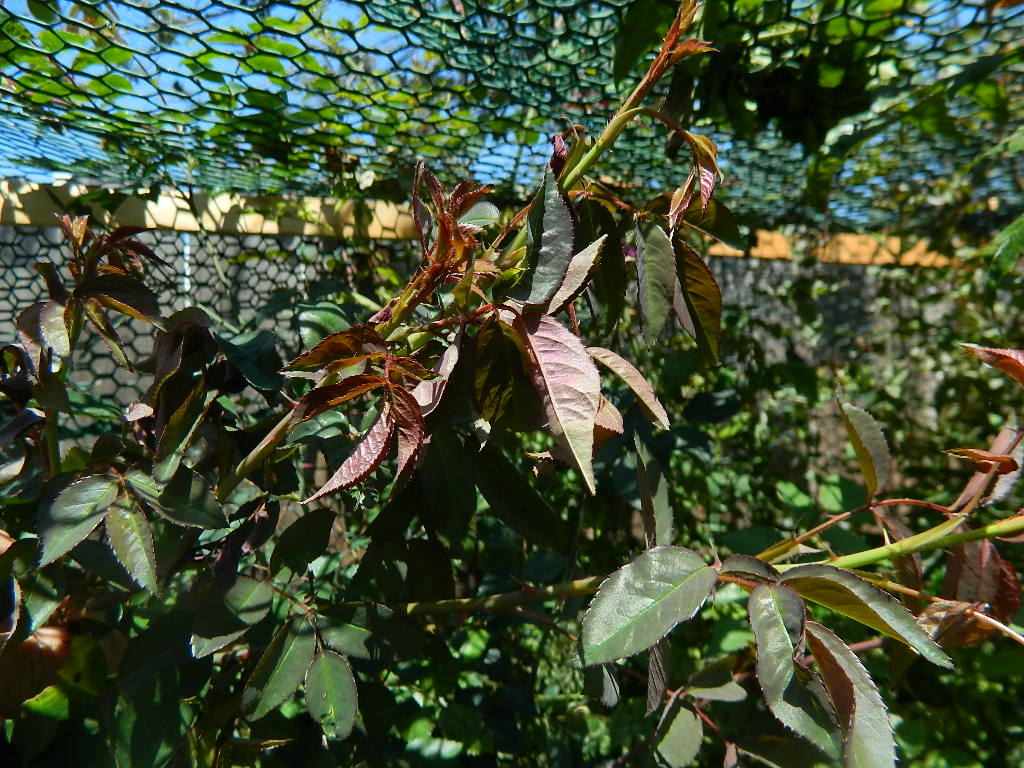I was just thinking of the species-modern path as I was driving around the field tonight.
My main thought was that it takes a lot of time and a lot of patience and a lot of space to bridge back to go down the road of integrating new species. I’m giving it a good go and I have an amazingly luck setup in which to do it…I have people to weed for me and my dad cultivates.
The two primary weaknesses that species tend to contribute are a lack of remontancy (along with the possible specter of added genes for delayed remontancy a la rugosas) and short petal longevity. The blossoms of most species roses last only one day. These weaknesses are challenging to breed out.
An important caveat when discussing species roses is that the variation from plant to plant means that my R. foliolosa might be significanty different from your R. foliolosa. Any generalizations about a particular species must be understood to have this vulnerability. I am not sure of the right word to refer to one particular plant of a species. “Clone” is not appropriate, because they’ve not necessarily been cloned. Specimen? Genotype?
The common advice that species roses are best used as pollen parents is, in general, borne out by my experience. Some species are hesitant to accept pollen from modern roses. Another factor is that, when crossing with a remontant parent, it is easier to sort out successful crosses when using the remontant parent as the seed parent. Accidental selfs will then reveal themselves with juvenile bloom. Self-pollinations of a species rose used as a seed parent will be much harder to detect because none of the seedlings will be remontant.
A lot of thoughts on specific species:
R. davidii - I, too, am curious about this one. My young R. davidii was hardy to the very tips this last winter, a zone 3/4 winter. Too soon to evaluate health, but no disease yet. The blossoms are tiny and quickly melt. Although it’s listed as a tetraploid, my specimen really seems diploid (small leaves, small pollen grains). I have used its pollen for the first time this year, and it seems very fertile.
R. acicularis: My specimens of R. acicularis also seem diploid. They are very different from Robert Erskine’s “Aurora”, which is supposedly a selection of acicularis. Smaller leaves, fine textured stems. Hardy to the tips every winter. A nice raspberry scent en masse that I haven’t determined if comes from the blossoms or the foliage. Probably imparts susceptibility to blackspot. Probably best used as pollen parent. Seeds need a significant warm stratification period in order to germinate.
R. woodsii: Very hardy, but some irregular dieback compared to R. acicularis. Often gets scruffy foliage later in summer - cercospora? The few crosses I’ve had show very good hardiness. Probably best used as the pollen parent.
R. virginiana and R. carolina. I purchased these two species from Lawyer Nurseries as bare root plants in bundles of 25 or 50. I selected the least thorny and planted out five of each. It is nearly impossible for me to tell the difference between the two species, but the R. virginiana showed more mildew and rust than the R. carolina so I’ve moved on to using R. carolina. I have grown outdoor seedling beds of the two and selected the healthiest and/or least thorny of the seedlings to grow on. I’ve made valiant attempts to use them as seed parents, with a few successes, but would definitely not recommend going that direction unless you have a ton of space and patience. It can take two or three years to gauge if a seedling was a successful cross. My roses of these species can have some dieback in my Zone 3b, but usually not much. I love their tenaciously healthy foliage (excepting mildew and rust), and how modern it looks. As tetraploids they should combine well with modern roses. They have a reputation for allowing yellow to come through in a cross, which happened with my crosses with First Impression and Lemon Fizz. They’ll generate seedlings of enormous vigor and long, upright canes. Watch out for “preferential pairing” when trying to recover rebloom…the percentage can be much much lower than the genetic math would suggest. In general I feel these have huge potential for adding hardiness, health, and lovely foliage but it is difficult to recover rebloom.
R. foliolosa: Pierre from France has warned on this forum of the difficulty of breeding out the thin, short-lived petals and other negative characteristics that come from this species, and that might be true. Because it was so late to bloom and quick to form seed I found myself using this rose way too much…it bloomed when I finally had time to pollinate. I can’t remember where I got my specimen, but it was light pink as opposed to the dark purple specimen that Paul Barden has mentioned having. My specimen worked very well as a seed parent and it actually gave a few remontant seedlings when crossed with modern roses. I have remontant seedlings of R. foliolosa x Will Alderman, Catherine Guelda, Lemon Fizz, and Commander Gillette. The only of those I’ve used further in crosses is the x Commander Gillette, which I call FOLIOCOM. I have a few remontant FOLIOCOM crosses this spring which are interesting but might have inherited the short-lived petal trait. I am speaking of my R. foliolosa in past tense because it got taken over by grass and thistle and I dug it out. If the species as a whole allows rebloom in first generation crosses it might be valuable.
R. rugosa: For me, rugosas are the only roses that combine full hardiness with real remontancy. They are generally chlorotic in my alkaline soil. Very different than working with other species. There are so many rugosa hybrids out there that your experience might vary depending upon which cultivar you choose to work with. I’ve worked some with Rugosa #3, Ruglauca, Henry Hudson, Belle Poitevine, Hansa (failed completely as seed parent), and Will Alderman. Their tendency towards self-sterility is very handy, because you can pollinate freshly opened blossoms that have started to release their own pollen and still end up with successful crosses. Not every hip takes, but when they do you get a lot of seeds that germinate. Delayed remontancy is a bitch, because it makes selecting seedlings at a young age difficult. Sterility of the F1’s is a huge problem. I’ve gotten some very interesting remontant seedlings from Belle Poitevine and R#3 but they were totally sterile. Interesting in the sense that they were very hardy and fully remontant. Same sterility in two remontant seedlings of Henry Hudson x Above & Beyond, which are shrubby and healthy. Belle Poitevine has a tendency of producing seedlings that are a brighter, more vivid pink than either parent. I have lots of very interesting once-blooming OP seedlings of Henry Hudson…several nearly thornless and tip hardy to eight feet, one a warm salmon-pink. I can see why hybridizers have often used Schneezwerg (Henry Hudson’s grandma). I grubbed out my HH, too, or else I’d be using it more. Will Alderman did not set hips with controlled pollination but my plant is growing amidst modern roses and a batch of OP seeds this spring has a surprising amount of juvenile rebloom. Of course the blooming seedlings are showing far less vigor than the others. My Will Alderman itself is chlorotic and suckering like a nightmare, but I’d like to try it some more. I’m still feeling out how to try to move forward with rugosas.
R. gallica: I used the Apothecary’s Rose in many of my early crosses, and I’ve used Tuscany Superb a little bit. They seem to impart vigor and hardiness beyond themselves, but the same problems recovering remontancy are there as when using other tetraploid species roses such as R. carolina.
R. nitida: I loooove my specimen of R. nitida. It is so damned shrubby - perfectly rounded form with shiny foliage and great fall color. It gets some spotting on the leaves, maybe cercospora, but they don’t turn yellow and fall off - horizontal resistance? This was my pollination baby last year and I tried it extensively as a seed parent. I finally figured out the seeds need a long warm stratification period to germinate, so this is the first season I have any seedlings from it. Only time will tell if they are successful crosses, but there does appear to be some variation from pollen parent to pollen parent, so I’m hopeful. I’m hoping that, as a diploid, it will be easier to recover rebloom in the F2 than with R. carolina. My plant of Prairie Joy x (Orangeade x R. nitida) is way hardier than Prairie Joy itself, which seems odd given that Orangeade x R. nitida should have only been 1/3 R. nitida. It has lovely foliage. So maybe the R. nitida influence is strong and continuing to the next generations.
R. arkansana - Mine came from Lawyer. Get this garbage out of my garden. Low vigor, disease, no female fertility. Apparently in the background of the horridly unhealthy Morden roses.
R. xanthina - not hardy.
R. whatever it is that grows around here: Somehow a Prairie Joy x this species ended up remontant and hardy with large, double, deep pink blossoms. Gets blackspot worse than Prairie Joy. I’m not super careful with my pollen, but I can’t figure out what else could have pollinated it.
R. fedschenkoana - didn’t do well for me, sorry Kim.
R. beggeriana - horrid thorns, poor health, tiny white blossoms. What’s to love? Julie O’s specimen looked vastly different than mine, however.
